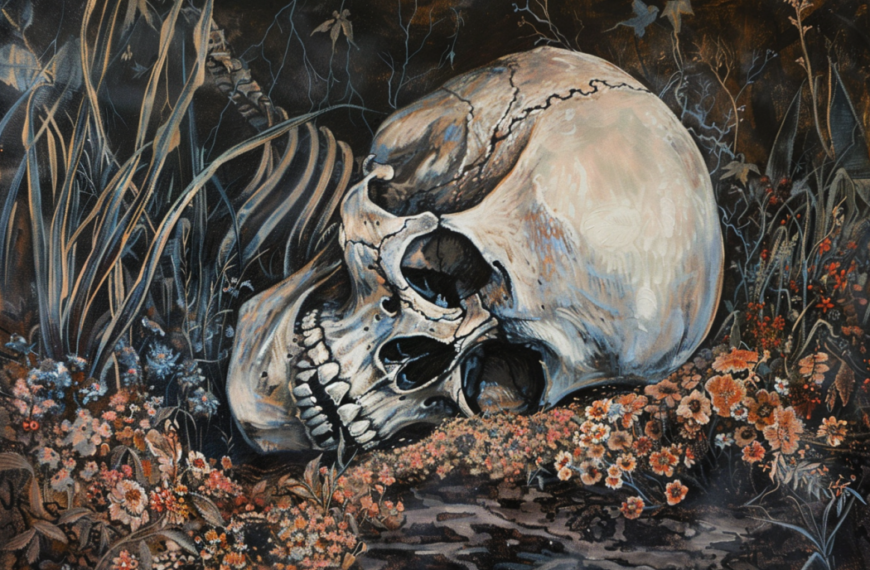Fox Symbolism Across History: All You Should Know
The fox is often depicted as a cunning and elusive creature. Across mythologies, the fox embodies a wide spectrum of traits, representing both light and shadow, virtue and vice. Fox symbolism includes qualities such as intelligence, adaptability, and resourcefulness, while also embodying deceit, guile, and the wilderness’s untamed spirit.
In this piece, we’ll learn what the fox symbolizes, exploring its significance across diverse cultures and historical contexts.
1. Trickery
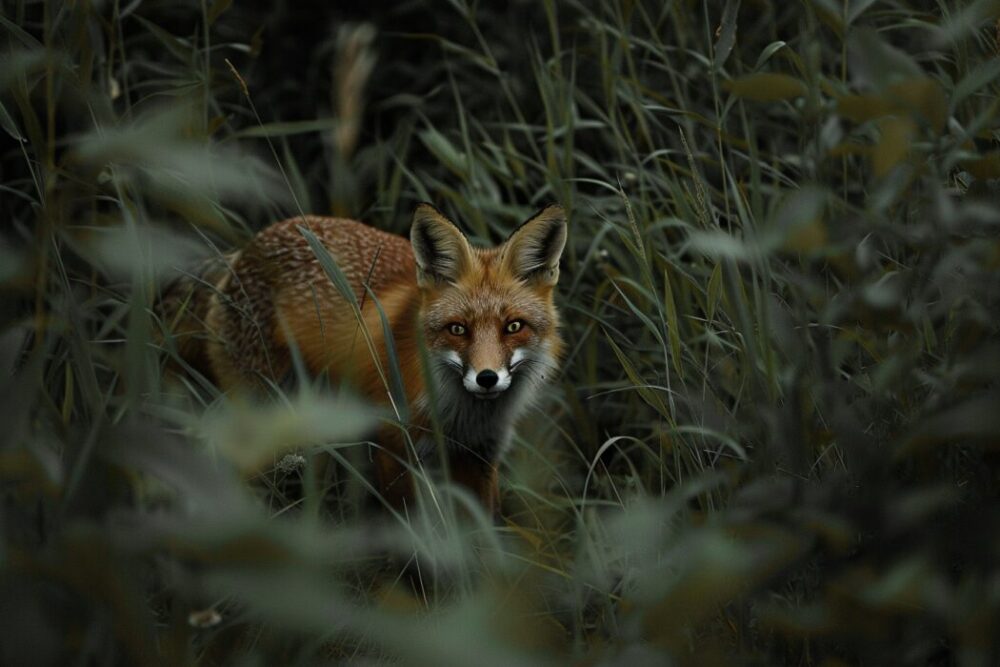
The fox appears in 42 out of a total of 358 fables of Aesop, a famous Greek fabulist in 6th century BCE who wrote moral stories. Notable stories include The Fox and The Grapes or The Fox and The Stork. The fox with its slanted eyes, sharp fangs, embodies cunningness, deceitfulness, and trickery. In folk tales, the fox is always classified as an antagonist, cunning, always scheming to steal from others like in the story “The Fox, the Hare, and the Rooster“.
In Africa, specifically Dogon mythology, the fox is described either as the mischievous deity of the desert, representing chaos, or as a messenger for the gods. In Asia, legend has it that if someone offers a gift to a fox spirit, it could turn them into a servant. Foxes are also known as skilled thieves. In ancient times, households that kept foxes could be accused of theft or practicing witchcraft. Meanwhile, the wealthy were believed to have made pacts with fox spirits.
Folk tales also tell of foxes using shape-shifting to deceive humans, transforming into priests to trick villagers or becoming beautiful women to seduce men. Natural phenomena like rain during sunny days are described as the playful antics of foxes. Kitsune (狐 – fox) and Tanuki (狸 – Japanese raccoon dog) are referred to as foxes, and later they become enemies, facing off against each other and both possessing the ability to transform.

Reynard the Fox depictions
In Europe, during the Middle Ages and Renaissance, foxes, associated with cunning and fraudulent behavior, were sometimes seen as symbols of the Devil. The stories are largely concerned with the main character Reynard, an anthropomorphic red fox, a trickster figure.
In his adventures, Reynard the Fox often tricks other animal characters to benefit himself or avoids their attempts to get back at him. His main enemy is usually his uncle, the wolf Isengrim. In the medieval tale of Reynard the Fox, he’s depicted as a clever trickster who interacts with other animals, all given human-like qualities, in a humorous look at medieval life.
Read More: Wolf Symbolism Across Cultures
2. Transformation
In Scottish mythology, Dia Griene is the daughter of the Sun God, imprisoned in the Underworld but often sneaking back to the mortal realm in the form of a fox, this cultural detail leads to the fox being seen as a symbol of transformation.
The fox spirit can transform into incredibly beautiful women who attract men with their strange charm. However, people dislike the deceitful and tricky nature of the fox, seeing it as a bad character who tricks others. The fox’s wickedness represents evil spirits that frighten people, luring victims to drain their energy, haunting and causing trouble for ordinary people.
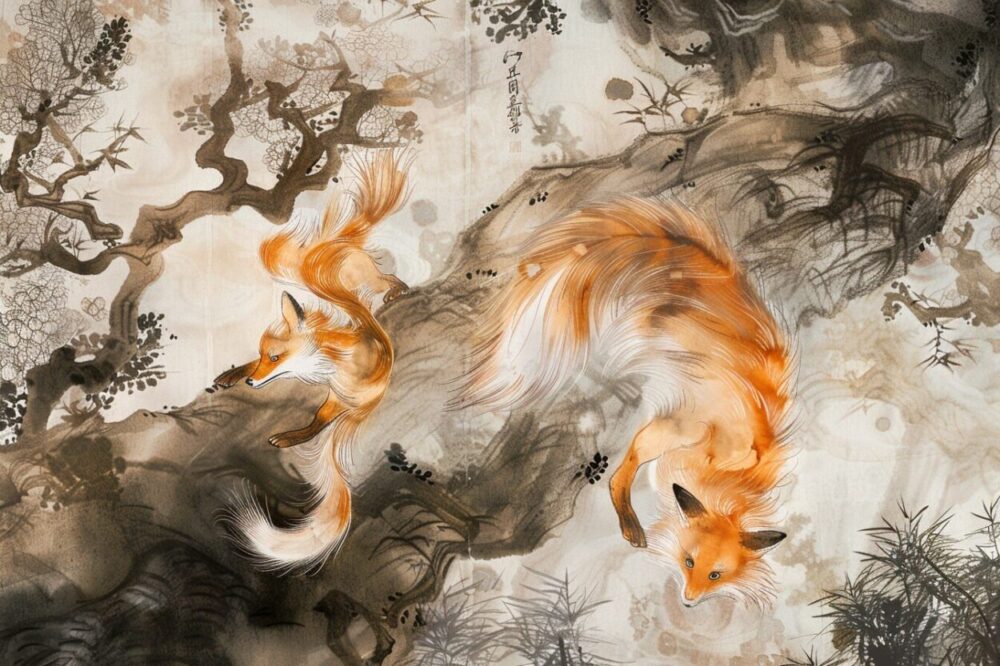
At night, fox spirits turn into humans and lurk on roofs, streets, and alleys, calling out victims’ names before cruelly killing them. In the past, people often burned paper charms and mixed the ashes into tea to stop fox spirits from bothering them.
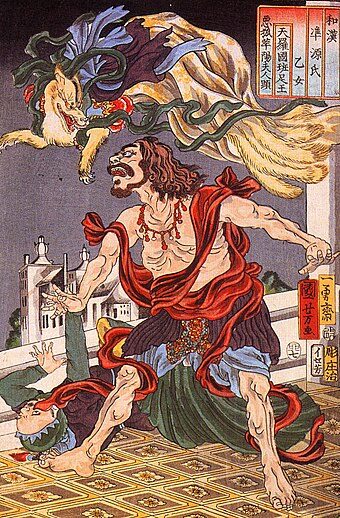
Prince Hanzoku terrorized by a nine-tailed kitsune
In Japanese folklore, kitsune are foxes believed to possess supernatural powers that grow with age and wisdom. They are said to be able to bewitch people and shapeshift into human or other forms. While some stories depict kitsune using their abilities to deceive others, others portray them as loyal protectors, companions, and even romantic partners.
Scholars have labeled kitsune as “witch animals” due to their bewitching abilities, also referring to them as “goblin foxes” or “fox spirits.” Kitsune are known for their ability to transform their shape and appearance (bakeru) and for their trickery (bakasu). These terms are related to the broader concept of bakemono, which refers to spectres or goblins. Similar abilities were also attributed to badgers (actually tanuki or raccoon dogs) and occasionally to cats (cf. bakeneko).
Read More: Symbols Of Strength Across Cultures

In Chinese palaces, fox spirits represent the idea of “beauty as a weapon,” becoming incredibly attractive seducers who manipulate even emperors, causing disasters that lead to the collapse of dynasties and make people suffer.
These fox spirits often appear as young, beautiful women. One famous fox spirit in Chinese tales is Daji. She was married to King Zhou of Shang but was possessed by a nine-tailed fox spirit. Together, they were cruel and tortured people. This led to revolts, and eventually, a new dynasty was formed by King Wen of Zhou. The fox spirit was later driven out by Jiang Ziya, the first Prime Minister of the Zhou dynasty, and condemned for being too cruel by Nüwa.
Read More: Symbols of Growth Across History
3. Deception
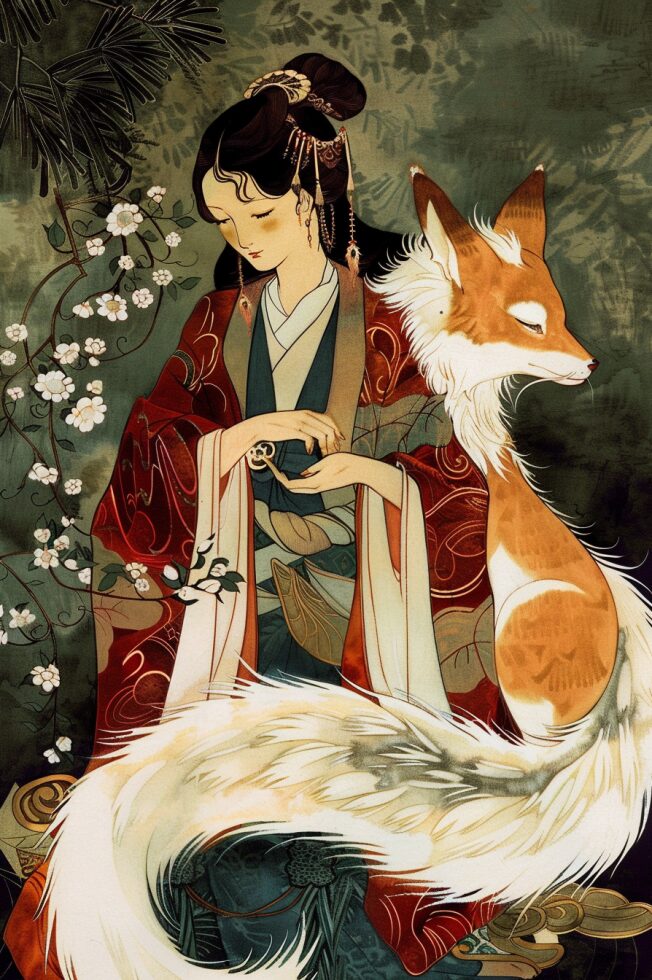
The fox is central in many folk beliefs from the time of the Inca Empire. In Inca folklore, the fox is seen as cunning and discreet. In Brazil, the crab-eating fox (Cerdocyon thous) is considered to bring bad luck. In many places in Brazil, the crab-eating fox is regarded as a malicious animal, bringing only misfortune.
As an omnivorous species, they forage for food during the rainy season and often hunt crabs in flooded plains, leading to conflicts with humans. People do not trust these threatening animals and see them as competitors for their livestock, considering them rivals in hunting.
In Japan, there is the Kitsune dance, with depiction of the fox on performance masks often using colors like red, yellow, orange, or adds details of sharp fangs to create an impression of its vicious and malicious nature.
In contrast, soft colors like pink, green, and yellow are associated with gentle characters like rabbits and birds, representing their gentle and noble souls.
Read More: Symbols of Innocence Across Cultures
However, in the movie Zootopia, the foxes have been portrayed as capable of redemption. For instance, Nick Wilde becomes the first fox police officer, and Gideon Gray becomes a respected baker. The fox is also the main character in the series “Domino – The Story of a Black Fox” and the animated movie “The Fox and the Hound” by Walt Disney, featuring the fox Tod. Writer Duong Thuy has a work called “Old Foxes, Old Ladies, and Romantic Novels.”
4. Fertility

In literature and art, the fox is also depicted romantically as a love nymph who dares to overcome prejudices to find love, willing to sacrifice life and centuries of cultivation to experience happiness in human form.
The fox’s image in Japanese beliefs carries connotations of contradiction in behavior and personality. It can be kind-hearted (good side) and also malicious (bad side). Although foxes are known as symbols of cunningness, in Japanese folklore, clever foxes will punish greedy and deceitful individuals. There are also stories of foxes transforming into beautiful maidens who are lost and in need of help, and later they will repay the kindness.
In English-speaking cultures, the terms “fox” and “foxy” have evolved into slang referring to a person, typically female, with sexual allure. Similarly, “vixen,” typically the term for a female fox, is also used to describe an attractive woman. However, when applied to humans, “vixen” often suggests that the woman possesses some negative traits.
5. Duality
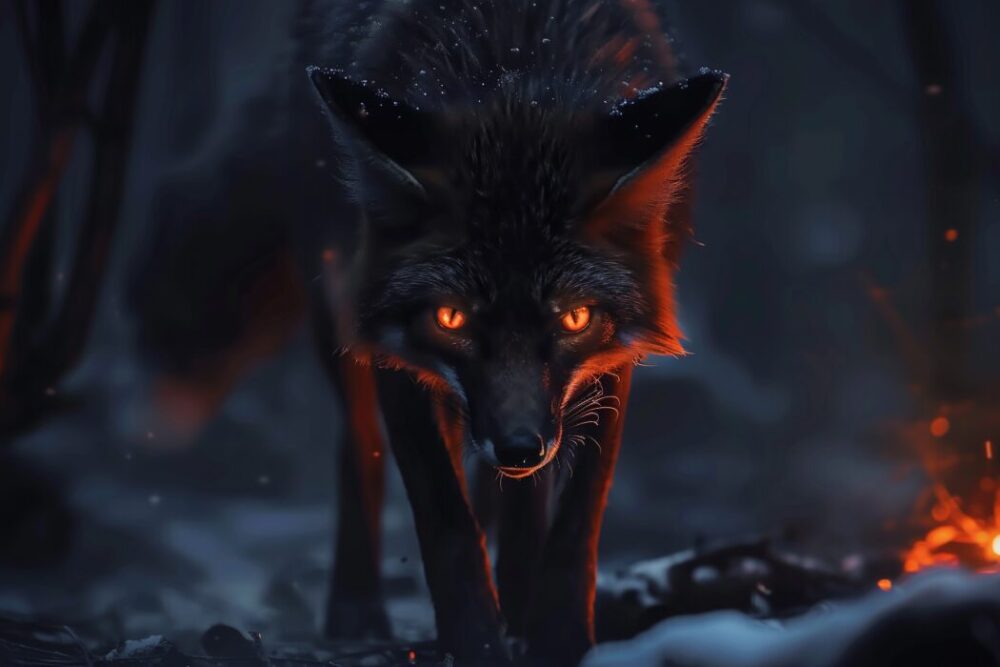
Additionally, the fox’s distinctive behaviors have led to the attribution of supernatural powers to it. Foxes are most active during the twilight hours preceding dawn, a period symbolizing the transition “between two worlds” – between night and day, cold and warmth, yin and yang.
Residing in dens nestled within the depths of the earth, a realm associated with yin energy, they are believed to absorb the earth’s life force, granting them remarkable longevity. Numerous ancient texts also recount tales of foxes scavenging abandoned corpses or haunting cemeteries to gnaw on bones, aligning them closely with the realm of spirits.
Read More: 30 Symbols Of Death In History
Although they have such scary meanings, in some places the fox are even worshipped. People would offer gifts to fox gods in their homes, seeking their kindness and protection in ancient China. This tradition started in northern China and later spread throughout the country. These rituals were mainly conducted by seers or sorcerers, who were believed to have special powers like predicting the future and healing.
6. Intelligence
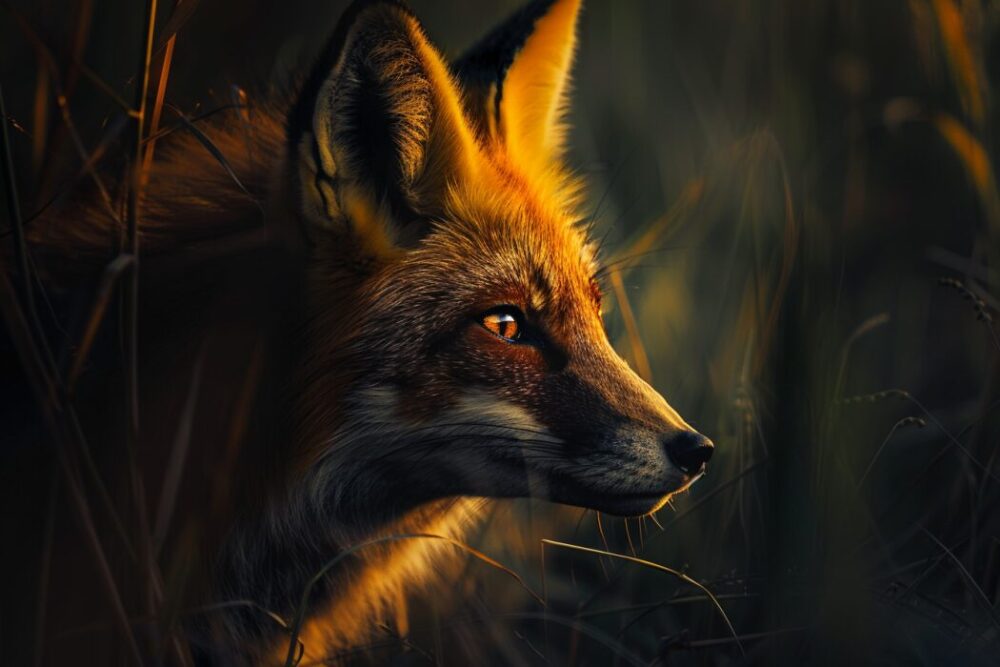
In Finnish mythology, the fox is often seen as a clever trickster, but not usually as evil. Despite being weaker, the fox outsmarts both the evil wolf and the strong but less clever bear, symbolizing how intelligence triumphs over malevolence and brute strength. The Moche people in ancient Peru also revered the fox in their artwork. They saw the fox as a clever warrior who relied on his intellect in battle, never having to use physical attacks.
In ancient Finland, foxes were hunted for their valuable fur. Foxes have a keen sense of smell, so traps were meticulously cleaned to remove human scent, often scrubbed with pine cones. Foxes, known for their intelligence, posed challenges for hunters to capture. It was believed that those who successfully caught foxes possessed potent shamanistic abilities. The creator spirit of foxes in Finnish mythology is Käreitär, the goddess of flame, or Lukutar. Her name comes from “lukka,” meaning sand bench, common locations for fox dens. Even today, the Finnish word for the northern lights is “revontulet,” meaning “fox-fires.”
7. Fortune

Also in Finland, foxes take on a lot of positive symbolism. There’s a legend about Tulikettu, the firefox. Tulikettu was a magical giant fox living in the snowy hills of the far north. Hunters dreamed of catching Tulikettu because it was believed that whoever caught it would become wealthy for life.
Tulikettu resembled the Phoenix bird, and only one could exist at a time. Despite its speed, no one could catch the firefox, as it was as swift as the wind.






